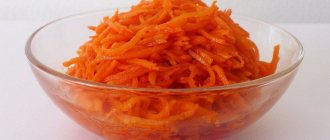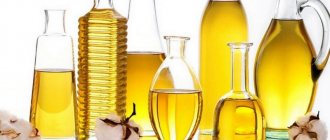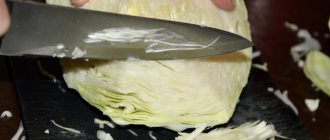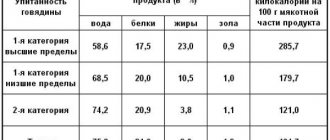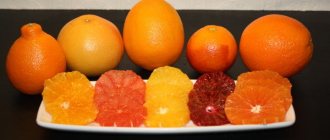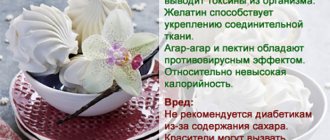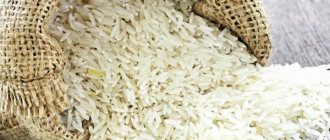Chemical composition of fried pollock
Allergy to pollock is very rare. In boiled form, it is allowed to be one of the first to be introduced into the fish menu of infants 8-9 months of age.
To get the maximum benefit, pollock is recommended:
- cook;
- steam or oven;
- stew.
Fried pollock, whose calorie content almost doubles compared to the above cooking methods, can be cooked on a grill or in a non-stick frying pan without adding fat.
Intensive frying in a large amount of oil can completely destroy the beneficial properties of fish.
The table shows a list of vitamins and minerals contained in the greatest quantities in 100 moderately fried pollock.
| Amount, mg | % of daily value | |
| Vitamins | ||
| A | 9.5 mcg | 1% |
| B1 | 0.09 | 6.5% |
| B2 | 0.1 | 5.5% |
| B4 | 50 | 10% |
| B5 | 0.23 | 4.5% |
| B6 | 0.09 | 4.6% |
| B12 | 1.5 mcg | 50% |
| D | 0.15 mcg | 1.6% |
| E | 6.5 | 43% |
| K | 3.1 mcg | 2.5% |
| PP | 4.46 | 22% |
| Minerals | ||
| K | 305 | 12% |
| Ca | 41 | 4% |
| Mg | 43 | 11% |
| Na | 578 | 45% |
| Ph | 183 | 23% |
| Cl | 966 | 42% |
| Fe | 0.86 | 4.8% |
| I | 0.058 | 39% |
| Co | 12 mcg | 130% |
| Mn | 0.26 | 13% |
| Cu | 0.144 | 15% |
| Mo | 4.4 mcg | 6.4% |
| Se | 13 mcg | 24% |
| F | 0.506 | 13% |
| Cr | 0.04 | 80% |
| Zn | 1 | 9% |
| Fatty acid | ||
| Omega 3 | 0.2 | 20% |
| Omega 6 | 3.6 | 73% |
The ratio of Omega 6 to 3 in a serving of pollock is 18:1, while for good health and healthy functioning of all organs it is recommended to maintain a ratio of 4:1 (in some cases 2:1). If you exclude oil from frying, the ratio changes to 1:1 (0.2 g Omega 3 and 0.2 g Omega 6 (4%)).
More on the same topic:
2 comments
- Elena writes, You also need to know how pollock should be cooked. Pollock meat is considered slightly dry, so the most suitable cooking method for it is stewing, as well as baking with hot seasonings, all sorts of vegetables, cheese, herbs and legumes. In addition, pollock can be fried and boiled. This fish is also steamed and even grilled.
- Lada Writes,
Despite the relatively low cost, this type of cod is not inferior in the content of useful substances to other, more expensive types of fish. In addition, its calorie content is low. The only contraindication to eating pollock is its individual intolerance. This fish is included in various diets. Pollock needs to be cooked correctly. Frying will give the fish an excellent taste, but it cannot be called a completely safe method of heat treatment.
The benefits and harms of fried foods
Doctors recommend including up to 400 g of seafood in your weekly diet. Eating small portions of lightly fried pollock (with a little or no oil) will benefit the body.
The chemical composition of fish contributes to:
- reducing the negative effects of tobacco on the body, which is especially important for smokers;
- maintaining the integrity of bones, teeth, strengthening cartilage tissue;
- improving the functioning of the musculoskeletal system;
- strengthening blood vessels, maintaining their elasticity, stabilizing heart rate;
- restoration of strength after illness;
- with systematic use, lowering sugar and cholesterol levels, improving brain activity and the ability to concentrate;
- acceleration of metabolism;
- normalization of the nervous system, resulting in a reduced risk of the negative impact of stress on health and the risk of developing depression;
- due to iodine content – improvement of thyroid function and general well-being;
- protein helps increase muscle mass, restore strength after grueling workouts (which is especially important for athletes and people engaged in heavy physical labor);
- potassium will help get rid of swelling due to its ability to remove excess fluid;
- iodine, selenium, and a complex of antioxidants in the composition help restore and cleanse the body during intoxication, eliminate heavy metals;
- the substances together contribute to the production of the hormone thyroxine, which is responsible for regulating the functioning of, among other things, the kidneys, liver, and brain;
- due to vitamins A, E, fatty acids, the condition of the skin, hair, and nails improves;
- zinc prevents acne;
- copper and iron serve to prevent anemia.
Abuse of pollock, especially fried pollock, leads to the following negative consequences:
- increased blood pressure, which is especially dangerous for people suffering from hypertension;
- exacerbation of gastrointestinal diseases;
- too salty fillet with a lot of added fat can lead to swelling;
- cause poisoning (seafood is prone to the accumulation of heavy metals and in particular mercury).
Percent Daily Value
The percentage of BJU from the daily value in 100 g serving of fried fish is: 20% protein, 12% fat, 0.2% carbohydrates. In 100 g of fried pollock, the contribution of BZHU to caloric content is equal to: 50% proteins, 49% fats, 1% carbohydrates.
According to the recommendations of doctors, the contribution of BJU to calorie content should be close to the following indicators: 30% of calories come from fats, 12% from proteins, 58% from carbohydrates.
Calorie analysis
The table provides a list of ingredients most often included in fried pollock dishes and an analysis of their calorie content.
| Component | Quantity | Kcal | % of the daily value of 1340 kcal |
| Raw pollock | 1000 | 72 | 5.39% |
| Sunflower oil | 50 | 450 | 33.67% |
| Wheat flour | 150 | 479 | 36% |
| Ground pepper | 5 | 13 | 0.9% |
| Sour cream (15%) | 150 | 162 | 12% |
| Cream (10%) | 150 | 178 | 12.4% |
| Salo | 50 | 420 | 31.5% |
| Butter | 30 | 198 | 15% |
| Breadcrumbs | 100 | 395 | 29% |
| Sauce (mayonnaise with pickled cucumber) | 100 | 162 | 12% |
| Sauce (sour cream, garlic, pickled cucumber) | 100 | 89 | 6% |
Energy value per 100 g
The table shows the caloric content of fried pollock in comparison with fish prepared by alternative methods.
| 100 g pollock | Calorie content, kcal | ||||
| fried | stew | baked | for a couple | boiled | |
| in vegetable oil | 133 | 86 | 86 | 79 (without adding oil) | 79 |
| in lard | 127 | ||||
| in butter with breading | 173 | ||||
| Breaded | 200 | ||||
| with sour cream (15%) | 138 | 98 | 98 | ||
| with cream (10%) | 132 | 92 | 92 | ||
| with parmesan and sour cream | 126 | ||||
Recipe? Recipe!
How to properly fry this fish? There are many recipes. Here are a few of them:
Fried pollock:
Products for two servings:
- Pollock - half a kilogram
- Vegetable oil –500 grams
- Salt and spices - to taste
- Flour - five tablespoons
- Four eggs
- Onions - three pieces
Cut the fillet into pieces for frying. We clean the onions and cut them into cubes. Take a bowl or plate, break it and pour the eggs into it. Add the onion here and beat thoroughly. Make a mixture of flour, salt and spices. Roll the fish pieces in this mixture.
Take a frying pan and put it on the stove. When it gets hot, pour oil into it and lay out the pieces of fish. Fry until cooked, then pour in the prepared mixture of eggs and onions, reduce the heat and simmer a little.
Is it possible to eat fried fish while losing weight?
Nutritionists recommend including pollock in your diet when losing weight. Low calorie content, high levels of vitamins and minerals per 100 g serving, some of which are close to the daily requirement, will help achieve weight loss without causing harm to the body.
There is a mono-diet based on vegetables and pollock, developed by experts in the field of weight loss, which, according to nutritionists, can help you get rid of 6 kg in 14 days. One of the main conditions is not to fry fish in oil.
Allowed preparation:
- Grilled;
- steamed;
- baking;
- boiling
The calorie content of raw fish when fried in oil increases almost 2 times. Including such a dish in the menu will slow down the process of getting rid of extra pounds, and abuse will lead to excess weight gain. Also, when heated for a long time, the oil begins to release carcinogens harmful to the body.
Fish selection
If you choose which fish tastes better in batter, then it is worth noting that the fillet turns out to be the most tasty and juicy. As for the choice of fish, both river and sea varieties are suitable for cooking.
The best sea creatures will be:
- pangasius,
- hake,
- cod,
- salmon,
- pollock
- and other red and white fish.
If you choose from river fish, the best would be:
- trout,
- som,
- carp,
- silver carp,
- carp,
- sturgeon,
- crucian carp,
- zander,
- burbot.
Delicious fried pollock recipes
Before cooking, fish should be completely defrosted at room temperature. It is imperative to remove the fins, scrape out the remaining entrails and films. It is advisable to remove the skin (or be sure to peel the scales) and remove the bones (ribs and spine). Cooking time depends on the size of the piece.
In flour
To prepare pollock in flour you will need:
- 500 g pollock;
- 5 tbsp. l. salt;
- ½ tbsp. flour;
- 400 ml sunflower oil;
- juice of 1/3 lemon;
- spices (coriander, ground black pepper, red hot pepper) - 1 pinch each.
The benefits of fried pollock, in comparison with other cooking methods, are lower, and the calorie content is higher.
You can use either whole fish or fillets.
- Pollock needs to be washed and dried, and the belly cleaned. It is recommended to remove the skin from the sirloin with a sharp knife and carefully remove the rib bones and spine.
- The cleaned fish is cut into 2-3 pieces or left whole. The carcasses are salted, rubbed with spices and sprinkled with lemon juice.
- Then the pieces are rolled in flour, placed in a frying pan preheated with oil, and fried for 6 minutes on each side until golden brown.
Salt and spices can be mixed directly with flour.
In a frying pan in sesame batter
The sesame seeds add a slight nutty flavor and make the finished fish even crispier.
For the recipe you will need:
- 400 g pollock fillet;
- 2 selected chicken eggs (SC) or 3 eggs of category 2;
- 125 g flour (wheat flour can be completely replaced with rice or corn flour, or mixed in a 1:1 ratio);
- 150 g sesame seeds;
- 5 g salt;
- 3-5 g ground pepper mixture;
- 150 ml vegetable oil.
The cooking process consists of the following steps:
- The whites should be separated from the yolks and beaten separately with a mixer or whisk.
- Then the yolks and whites are combined, salted and pepper to taste.
- Flour and sesame seeds are mixed.
- The fillet, cut into pieces about 5 cm thick, is placed in the egg mixture for 1-2 minutes.
- After pollock is dipped into flour with sesame seeds, then again into beaten eggs, and again into the sesame-flour mixture.
- Place the pieces in a frying pan heated with oil and fry on both sides until golden brown (5-6 minutes each).
- Ready pollock can be placed on a paper towel to get rid of excess fat.
With carrots and onions
You need to prepare:
- 600 g pollock;
- ½ tbsp. wheat flour;
- 2/3 lemon or lime;
- 1 large carrot;
- 1-2 onions;
- 4 tbsp. l. vegetable oil;
- salt, pepper - to taste;
- 1 tsp. sweet paprika;
- ½ ripe tomato.
Vegetable oil can be replaced with lard. To render the fat better, add 1 tbsp to 50-60 g of lard. l. vegetable oil.
- Pollock must be cleaned of fins, scales and bones.
- The fish is cut into portions, sprinkled with lime or lemon juice, lightly salted and peppered.
- The fillets are alternately rolled in flour and fried in oil (with 2 tablespoons) on 2 sides for 5 minutes until golden brown. The finished fish is transferred to a plate.
- Onions and carrots are fried separately. To do this, vegetables should be washed and peeled.
- Onions can be cut into cubes or half rings. Carrots are grated or, to make them more juicy, chopped into 5 mm thick sticks.
- Place the vegetables on a heated tray with 2 tbsp. l. oil in a frying pan, add a little salt and fry until golden brown (4-5 minutes). For a more intense taste and aroma, you can add chopped tomato at the end and fry everything together for another 2-3 minutes.
When serving, each piece of pollock is supplemented with 1-2 tbsp. l. fried vegetables.
With gravy
Fried pollock, whose calorie content is 127 kcal, is prepared from a set of products:
- 1 kg of fish;
- 2 tbsp. l. oils;
- 1 carrot;
- 1 onion;
- 5-6 tbsp. l. sour cream (15%);
- salt;
- spices (sweet and allspice, nutmeg, thyme) - to taste;
- dill, parsley.
This option goes well with mashed potatoes.
- The fish must be cleaned, bones removed, and cut into portions.
- Grate the carrots and finely chop the onion.
- Fry the onion in oil in a saucepan, after 3 minutes add carrots and salt.
- Then add fish to the vegetables, sprinkle it with spices and fry on 2 sides for 3 minutes.
- Then put sour cream on the frying pan. The ingredients are carefully mixed with a spatula and simmered under an open lid.
- After 5-7 minutes, it is recommended to taste the gravy, add salt and spices if necessary.
- Then the fish and sauce are left to simmer over low heat under a closed lid for another 5-6 minutes.
The finished dish is sprinkled with fresh chopped herbs on top. If desired, to add a slight sourness to the dish, add 1-2 tsp to the sour cream sauce. tomato paste. You can completely replace sour cream with tomato paste (2-3 tablespoons), diluted with a small amount of water. The cooking procedure remains the same.
Garnished with asparagus
On sale you can find shoots of white and green asparagus. The latter is more common. Asparagus - a plant with a high content of vitamins B, A and C and low calorie content (22 kcal/100 g) helps eliminate waste and toxins from the body.
For the dish you will need:
- 700 g pollock;
- 200 g 10% cream (you can use sour cream);
- 5 g ground pepper;
- 5 g sweet paprika;
- 2 tbsp. l. olive and 2 tbsp. l. vegetable oils;
- ½ tsp. lemon juice;
- 3 cloves of garlic;
- 1 tbsp. l. flour;
- salt;
- 70 g cheese (hard varieties);
- 6 sprigs of dill;
To prepare asparagus you will need:
- 600 g green asparagus;
- 20 g butter;
- 10 g olive oil;
- 2 tsp. pine nuts;
- ½ tsp. salt;
- ½ tsp. Sahara;
- a pinch of pepper;
- ½ tsp. lemon juice.
The fish is prepared as follows:
- Thawed fish must be cleaned, all entrails and preferably bones removed.
- Processed pollock is cut into pieces 5 cm thick.
- In a separate container, mix 2 types of oil, add garlic passed through a press and lemon juice.
- Pieces of fish are salted, sprinkled with pepper and paprika.
- Then the fillet is poured with garlic sauce, everything is mixed and left to marinate for 10 minutes.
- You need to add 1 tbsp to the cream. l. flour, salt to taste and mix the ingredients thoroughly with a whisk.
- Next, the pollock is placed in a baking dish, poured with cream and sprinkled with grated or sliced cheese.
- The dish is baked for 30 minutes in an oven preheated to 180⁰. It is advisable to cover the baking sheet with foil for the first 20 minutes.
- 10 minutes before cooking, remove the foil and sprinkle the fish with fresh chopped dill.
Asparagus must first be washed, the rough skin removed from approximately the middle of the stem with a knife, and the hard ends trimmed off.
Asparagus can be prepared as follows:
- The stems are tied with thread (6 pieces each) and placed in boiling water with the addition of salt and sugar. The shoots are boiled for 7 minutes, after which they are removed and laid to dry.
- Next, melt the butter in a frying pan and add olive oil.
- Pepper the heated oil and squeeze out lemon juice.
- Place the asparagus in a baking container, pour over a mixture of oils and bake at 180⁰ for 7 minutes.
- The finished stems are sprinkled with pine nuts.
You can cook asparagus in other ways: fry on a double-sided grill (5 minutes), steam (10-20 minutes).
Pollock cutlets in the oven
For cutlets you will need:
- 500 g of minced pollock (you can prepare it yourself by grinding the fish pulp in a blender or meat grinder);
- 1 large chicken egg;
- 1 onion;
- 2 tbsp. l. flour;
- 1 tsp. salt;
- 3 g ground pepper;
- 60 g butter;
- 5 g sweet paprika;
- 1 tbsp. l. vegetable oil.
This dish is suitable for children and adults. The cutlets can be steamed.
Below is a description of the oven cooking option:
- In a frying pan, fry the onion, chopped into small cubes, in oil until golden brown.
- Then put the minced meat into a deep bowl, add a raw egg and fried onion.
- Next, add softened butter, salt and pepper the minced meat.
- All ingredients are thoroughly mixed and cutlets are formed.
- Place the cutlets on a baking sheet greased with a small amount of oil or lined with parchment and bake in an oven preheated to 180⁰ for 40-50 minutes.
Instead of flour, you can add to the cutlets:
- semolina (1.5-2 tbsp) with milk (4 tbsp): the finished minced meat should be kept in the refrigerator for 40 minutes so that the cereal absorbs moisture and swells;
- white bread pulp soaked in milk (50 g per 50 ml of milk);
- 1 finely grated potato;
- ground oatmeal.
Pollock meat is quite dry.
To make it more juicy, you can add to the minced meat:
- lard (50 g): mince or blender;
- sour cream (60 g);
- cream (50 ml);
- carrots and greens.
Fish and Chips in English
Fish and Chips is the national English dish, an unspoken symbol of England. Fish and Chips – deep-fried fish fillets in batter and French fries.
For the recipe you will need:
- 600 g pollock fillet;
- 1 kg of potatoes;
- 700 ml vegetable oil;
- salt and ground pepper to taste;
- 3 tbsp. l. flour.
There are several options for making batter for Fish and Chips.
One of the simplest includes:
- 200 g wheat flour;
- 350 ml beer (dark or light);
- 1 tsp. baking powder;
- 5 tbsp. l. potato starch;
- salt pepper.
If you don't have deep fryer, you can use a deep metal pan for frying. The advantage of deep frying is that the mechanism is able to maintain the desired temperature.
Fried pollock, the calorie content of which, excluding potatoes, reaches 390 kcal/100 g, is prepared as follows:
- Washed potatoes must be peeled and cut into cubes, 6-8 cm long, and 1 cm wide and high.
- Then place the potatoes in a colander, rinse with cold water and lay out to dry on a paper towel. Dried potatoes can be lightly sprinkled with flour.
- The fish is cut lengthwise into 2 parts. The pieces should be large, and it is important to take into account the size of the fryer (the pollock should fit completely into it). Each piece should be dried with a towel, rubbed with pepper and salt and left to marinate.
- Afterwards you need to prepare the breading. The container is selected based on the size of the fillet. Mix flour, baking powder and starch in a bowl. The mixture is salted and peppered to taste, taking into account the amount of spices added to the fish fillet.
- Next, beer is added to the flour in portions with constant stirring. The consistency of the finished batter should resemble pancake batter.
- The next step involves preparing the deep fryer. The oil is heated to 180⁰.
- First, dip the potato slices into the deep fryer for 5 minutes. Then they are laid out on parchment to remove excess fat.
- Pollock is dipped into a plate with flour, then into batter and then into the deep fryer. To ensure even frying, the fish should be turned over periodically. Cooking time will take about 8 minutes. The batter should become crispy and golden brown.
- Remove the finished pieces using a slotted spoon and place on a paper towel to remove excess fat.
- The slightly cooled potatoes are fried a second time at 200⁰ until crispy for about 5 minutes, and placed on parchment sprinkled with salt.
As a sauce for Fish and Chips, you can mix sour cream (or mayonnaise) with finely chopped pickled cucumbers, herbs (green onions, dill), and, if desired, for a sharp taste, with garlic passed through a press.
Pollock is included in the menu of diets aimed at weight loss. To avoid harm to the body, it is recommended to alternate fried fish with baked, boiled or steamed fish.
Pollock with asparagus garnish
Let's fry the pollock in batter. As you have already seen, such fish does not provide us with many calories, so you can eat this dish during dieting periods. Asparagus is an ideal side dish for fried fish. You will receive both benefits from the treat and gastronomic pleasure.
Advice! For a dietary menu, choose mayonnaise with a low fat content.
Ingredients:
- pollock – 0.8 kg;
- mayonnaise – 150 ml;
- spices - two tables. spoons;
- egg;
- salt;
- asparagus – 150 g;
- purified vegetable oil – 50 ml;
- greenery;
- sifted flour - one table. spoon.
Preparation:
- Let's start by preparing the fish. Let's cut off the fins. Then we cut off the head and also the tail. Don’t throw away these parts of the carcass, because you can cook delicious fish soup from them.
- Let's gut the fish. Let's wash it thoroughly.
- Cut the pollock into medium-sized portions. You can sprinkle them with lemon juice to rid the pollock of its specific smell.
- Place mayonnaise in a bowl.
- Add an egg to the mayonnaise.
- Add spices to the egg with mayonnaise.
- Wash and dry the greens. Let's chop it finely.
- Add half of the chopped greens to the batter ingredients.
- Now add the sifted flour.
- Stir the batter until it has a homogeneous structure. It will be runny. If you want a thicker batter, add more flour.
- Add salt to the batter.
- Let's stir it well.
- In a frying pan, heat the refined vegetable oil.
- Dip all the pieces of fish one by one in the batter thoroughly and place them in a frying pan.
- This is how we laid out all the pieces of pollock.
- Pour the remaining batter into the pollock.
- Fry the fish pieces for fifteen minutes on a high burner level, covering the pan with a lid.
- Then, using a wooden spatula, carefully, so as not to damage the integrity of the fish pieces, turn them over.
- Fish steaks should be golden brown on the fried side.
- Sprinkle the fish with chopped herbs.
- Place asparagus on top of the fish. Frozen food does not need to be thawed first.
- Cover the frying pan with a lid and fry the pollock steaks with asparagus on a medium burner for fifteen minutes.
- Ready! You can treat your household!

